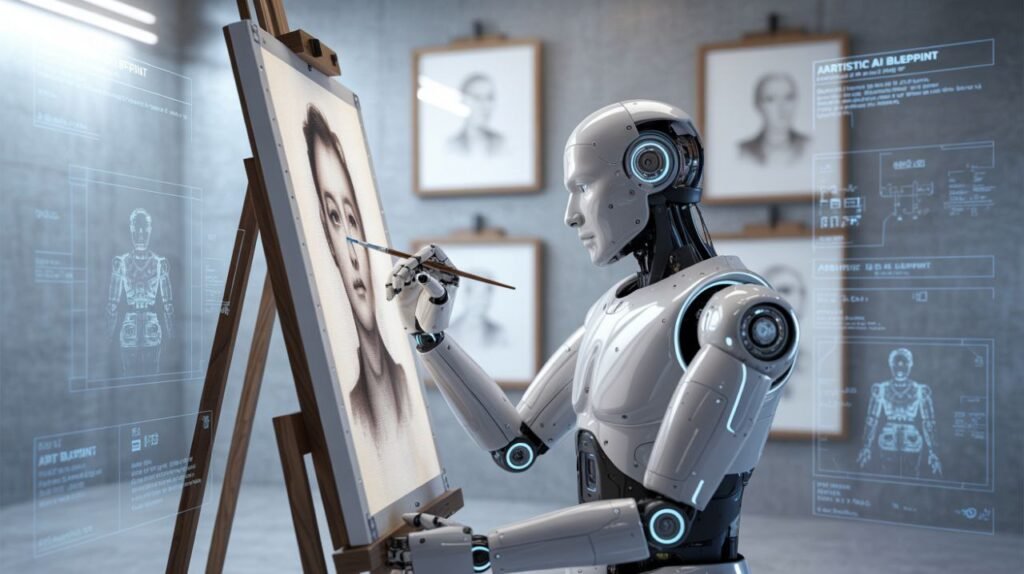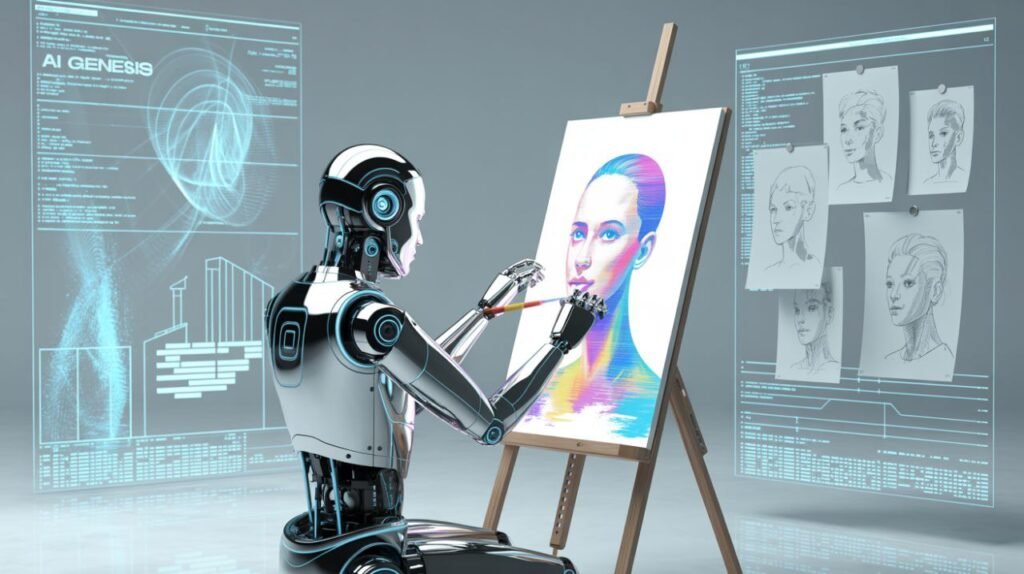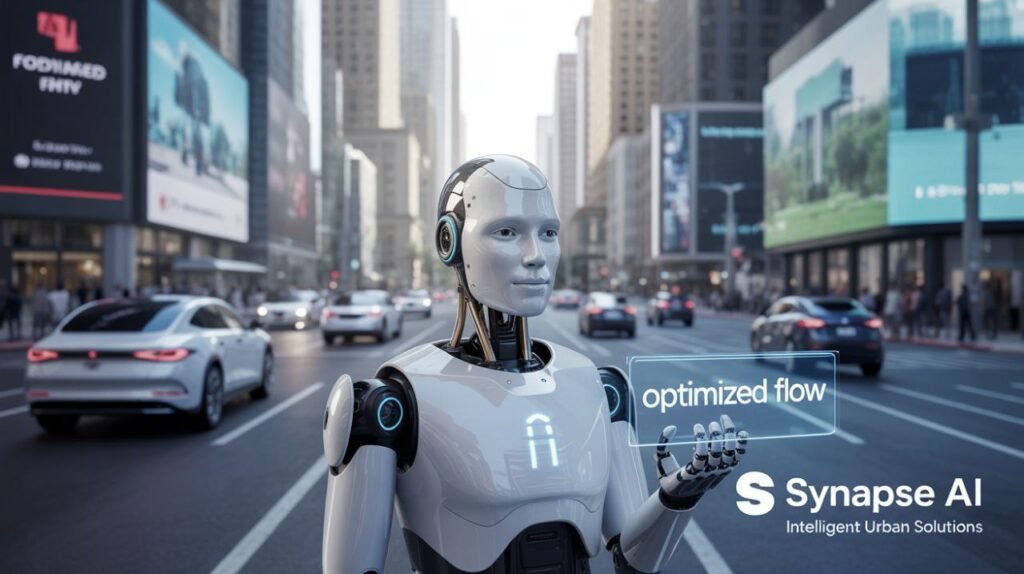What is Generative AI? A Deep Dive into the Future of Artificial Intelligence Generative AI isn’t just trending—it’s transforming everything.
From the way we write, design, communicate, and even imagine the future.
With over 234,000+ global searches each month and growing interest in places like the U.S., India, and Europe, people are asking: What is this technology really? And how does it work behind the scenes?
Let’s break it down like a real human would—clear, practical, and without the tech jargon overwhelm
Understanding Generative AI
What Does “Generative” Really Mean?
The word “generative” comes from the word generate, meaning to create. So, Generative AI is artificial intelligence that creates things—words, pictures, music, videos, code, and even conversations.
Unlike traditional AI (like the spam filter in your email), which mostly reacts or classifies, generative AI takes initiative. It starts from a prompt and produces something that never existed before.
explore how the Model Context Protocol (MCP) boosts AI understanding in complex environments
Example: > You type: “Draw me a sunset on Mars with two astronauts playing chess.” Tools like DALL·E or Midjourney can generate a unique image that fits that request.
Core Technologies Powering Generative AI

do you believe this picture. I’m doing this with a Generative AI named ideogram ai , when you give it a prompt (text), it changes it to a picture for you.
Let’s demystify some of the terms you might have heard:
Transformers
The engine behind most large language models (LLMs), like GPT (ChatGPT), Claude, Gemini, and LLaMA. Transformers learn context and relationships between words to produce coherent, smart-sounding text.
learn how Agentic AI is transforming decision-making and autonomy in real-world scenarios
GANs – Generative Adversarial Networks
These involve two neural networks: one generates content, the other evaluates it. Commonly used in deepfake videos or realistic AI art.
Diffusion Models
These start with static noise and refine it into an image over multiple steps. Used in tools like DALL·E 3 and Stable Diffusion.
Real-World Applications of Generative AI (2025)
It’s not science fiction anymore. Here’s how people and companies are actually using generative AI today:
Content Creation
– Bloggers use ChatGPT to brainstorm and structure articles
– Marketing teams create hundreds of variations of ad copy
-YouTubers draft scripts or edit captions in minutes
According to Google DeepMind, Veo 3 can generate HD-quality video from just a few words, offering creative professionals a revolutionary tool for storytelling.
Real Example: HubSpot integrates GPT-based tools to help marketers draft email campaigns with one click.
Design & Art
-Digital artists co-create with Midjourney or Leonardo.ai
-Fashion designers prototype new outfits using AI-generated sketches
-UX teams build interface wireframes based on natural language prompts —
Coding and Dev Work
-Developers use GitHub Copilot to write boilerplate code
-SQL queries, API docs, and bug fixes are automated
-Low-code and no-code tools are powered by AI recommendations
Example: Amazon CodeWhisperer helps AWS developers write functions faster and smarter.
understand how Generative AI is being integrated into the Software Development Life Cycle (SDLC)
Education
-AI tutors answer questions in real-time based on the student’s learning level
-Educators auto-generate quizzes, summaries, and flashcards
-Academic writing tools like Elicit or Scite offer citation-backed insights —
Gaming & Simulation
-Game studios generate entire story arcs or side quests
-AI models write dialogue or generate realistic voiceovers
-Simulation software adapts gameplay based on user behavior
Benefits of Generative AI

Let’s be honest—it’s not just hype. Here’s why millions are turning to Gen AI every day:
Efficiency
A task that took 3 hours now takes 3 minutes. Whether it’s designing a logo, drafting a resume, or building a landing page.
Creativity Boost
It doesn’t replace creativity—it sparks it. Artists and thinkers now have AI as a brainstorming partner.
Accessibility
You don’t have to be a coder, designer, or writer anymore to build powerful tools or express ideas clearly.
Customization
AI can tailor content to your tone, needs, and audience—even in different languages.
Risks and Ethical Concerns
Of course, this isn’t all sunshine and algorithms. Let’s talk honestly about what needs attention:
Deepfakes & Misinformation
AI can now generate fake news articles, speeches, or even clone someone’s voice. This raises serious trust issues in media and politics.
Job Disruption
Jobs involving repetitive writing, basic customer support, or template-based design are evolving fast. But remember: tools don’t replace people—people who use tools replace those who don’t.
Data Bias
If AI is trained on biased data (and most is), it can unknowingly reflect stereotypes, skewed perspectives, or unfair assumptions.
Intellectual Property
If an AI paints a picture, who owns it? The user, the developer, or the dataset it was trained on? Laws around this are still evolving.
What’s Next for Generative AI? (2025+ Predictions)

Personalized AI Companions for therapy, productivity, or even daily planning
AI-Directed Films: Short movies written and animated entirely by machines
Real-time, Voice-enabled Multimodal AI that understands video, voice, and emotio
Auto-Agent Workflows where AI handles multi-step tasks across apps (think booking flights, writing emails, organizing budgets—all automatically)
Stat Insight: Gartner predicts that by 2027, over 80% of enterprise content will involve generative AI.
Extrenal Resources
1. Generative AI is a subfield of artificial intelligence that can create new data, such as text, images, and audio. The Wikipedia article explains its background, models, and real-world applications in detail.
2. IBM offers a beginner-friendly explanation of how generative AI works and where it is applied — from content creation to software development.
Read on IBM Research Blog
3. OpenAI provides a technical but accessible explanation of generative models like GPT and DALL·E, including how they learn and generate content.
4.McKinsey’s research reveals how generative AI can reshape industries, improve productivity, and impact global labor markets.
I really enjoyed it. I hope you will find it as useful as we did. watch it I am sure you will benefit from many things that I have not written here. lectures with mirella lapta
Final Thoughts
How You Can Stay Ahead Whether you’re curious, excited, or nervous—it’s worth getting hands-on. Here’s how to start:
Try These Tools:
ChatGPT – Text generation
DALL·E / Midjourney – Image generation
Perplexity.ai / Scite – Research & fact-checking
ElevenLabs – AI voice synthesis
Learn Prompting:
The way you talk to AI matters. Explore Prompt Engineering to get better results.
Build Something:
Even a small project using generative AI will teach you more than 10 blog posts ever could.
> “Generative AI is not here to replace humans—it’s here to empower those who embrace it wisely.”
Want More Like This? Read the full article with visuals, examples, and more insights here:
7 Smart Ways to Invest in Quantum Computing Today
